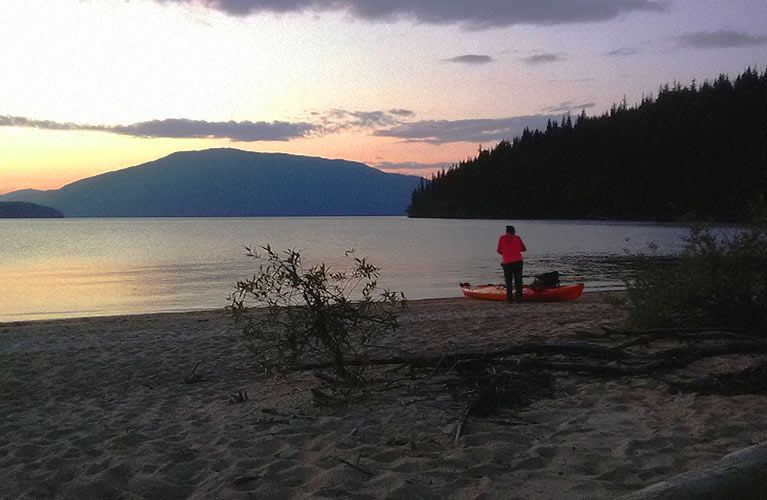 A camping trip to the pristine area of Murtle Lake in Wells Gray Provincial Park, B.C. is a destination that Marv Miniely and his wife always look forward to. The protected wilderness, pristine mountains and valleys is a remote location beloved by campers, kayakers and canoers from across North America who want to get off the beaten track.
A camping trip to the pristine area of Murtle Lake in Wells Gray Provincial Park, B.C. is a destination that Marv Miniely and his wife always look forward to. The protected wilderness, pristine mountains and valleys is a remote location beloved by campers, kayakers and canoers from across North America who want to get off the beaten track.In September 2020, Marv and his wife were settling in on the first evening of their camping trip to Murtle Lake, when nearby campers came by to tell them that a pair of kayakers had capsized their kayaks and had swim to shore. The good Samaritans said that they gave the two kayakers some of their dry clothes, and although they were able to get a camp fire going, night was setting in and there was worry about the risk of hypothermia. The temperature that evening was about 10 degrees Celsius. They had lost all their supplies and camping gear when their kayaks had capsized.
World renowned as the largest canoe-only lake in North America, the only way to travel in to Murtle Lake is via a pair of mountain and logging roads, approximately a 45-minute drive from Highway 5. There is no cell phone coverage in the area. Once you arrive at the Park, you have to walk or portage with your kayak, canoe and camping gear another 2.5kms to get to the Lake, a journey that takes between 1.5 and 2 hours.
After hearing the story from the good Samaritans, the decision was made to hit the SOS button on Marv’s SPOT Satellite Messenger to get help. It was about 8:00pm. By 10:30pm, a Park Ranger from a local detachment arrived and confirmed the pair were in the early stages of hypothermia. The Ranger was able to find Marv’s location by the GPS coordinates transmitted from his SPOT Satellite Messenger. From there, the Ranger was able to easily locate the kayakers that had capsized.
“It was a perfect time to use my SPOT,” says Marv Miniely. “The two kayakers were immediately transported back to the Ranger’s cabin, where they were able to get a warm meal and spend the night.”
Marv is a long time SPOT customer. In fact, he purchased one of the first models when the technology was introduced in 2007. He uses his SPOT device when hiking and backpacking, or flying his small plane, to check-in with his wife when he departs and arrives at a location.
“I will check-in at the beginning of my day and end of my day so that my wife will know where I am and that I have arrived safely. She’ll know that she’ll get 2 messages a day from me, so if something happens, she’ll be able to see where I last was using SPOT Mapping.”
“In addition to camping and hiking trips, I have done a lot of flying in the last seventeen years, from Alberta to Vancouver Island, up the California coast to Nanaimo B.C. I’ve also flown to the Bahamas and Mexico. Every trip I take, I have SPOT with me - all the time. The beauty of SPOT is the security of knowing my GPS location is tracked and updated every 10 minutes.”